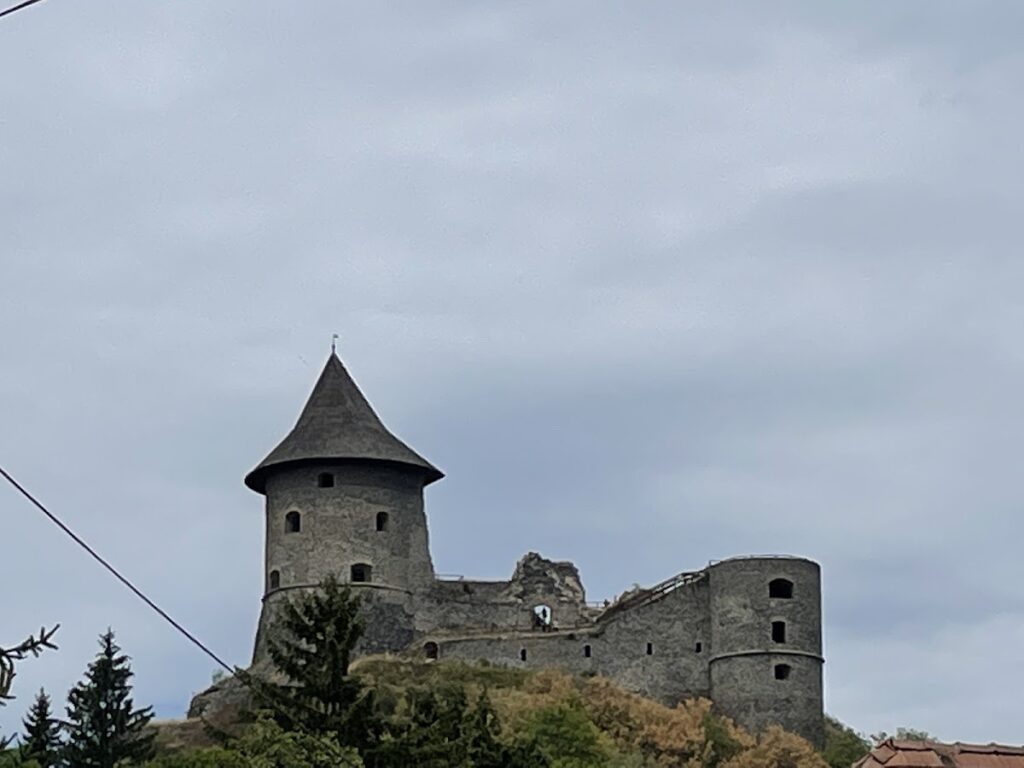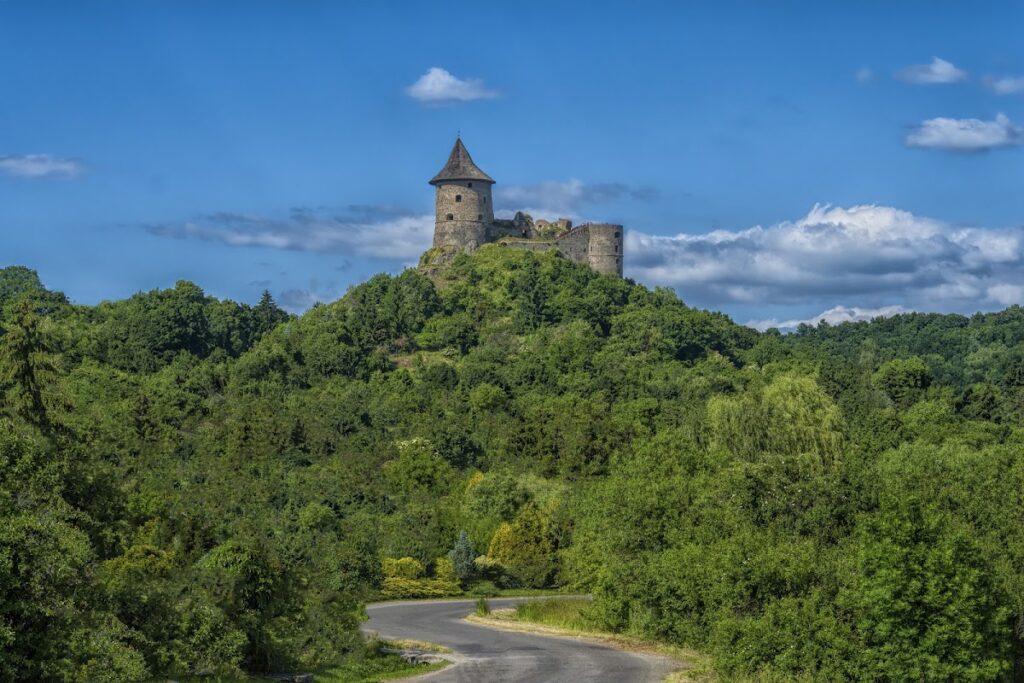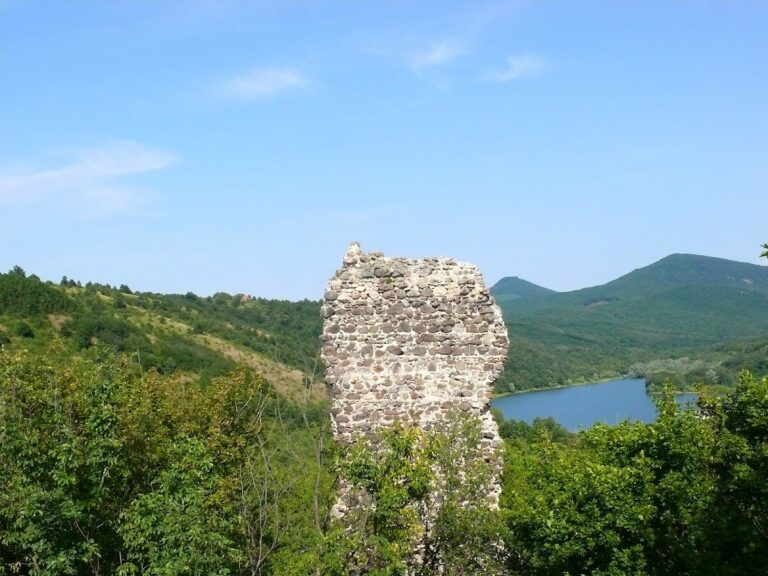Šomoška Castle: A Medieval Fortress in Slovakia
Visitor Information
Google Rating: 4.8
Popularity: Medium
Google Maps: View on Google Maps
Official Website: www.facebook.com
Country: Slovakia
Civilization: Unclassified
Remains: Military
History
Šomoška Castle is located near the village of Šomoška in present-day Slovakia. It was built by medieval Hungarian nobility during the late 12th to early 13th centuries, a time of widespread castle construction following the devastation of the Mongol invasion in 1241.
Originally erected atop a basalt hill within the Cerová vrchovina mountain range, the castle was likely commissioned by the Kacsics noble family. It served as part of a defensive network responding to the vulnerabilities exposed by the Mongol raids. Shortly after its construction, the fortress entered the possession of Matúš Čák, a powerful Hungarian oligarch, who used it as a base for his military campaigns against supporters of the royal crown. After Matúš Čák’s death in 1321, King Charles I confiscated the castle and granted it to Tamás Szécsényi, a loyal member of the nobility.
During the 15th century, ownership shifted to the Losonczy family. The castle’s strategic importance grew amid regional conflicts, leading to its expansion for artillery defense. From 1573 to 1596, Šomoška Castle fell under Ottoman control, commanded by Ali of Filakovo. The fortress served as a key military outpost during Turkish occupation within the borderlands of the expanding Ottoman Empire.
In the early 1600s, Šomoška played a role in several anti-Habsburg uprisings. Forces loyal to leaders such as Stephen Bocskay and Gabriel Bethlen occupied the stronghold during these turbulent years. Local governing assemblies later ordered restorations to reinforce its defenses against both imperial forces and continuing unrest.
Following the failed uprising led by Ferenc II Rákóczi in the early 18th century, the imperial authorities decreed the castle’s demolition to prevent future military use. Only partial destruction was carried out. The castle suffered further damage in 1826 when a lightning strike caused a large fire. Over time, it fell into ruin and was utilized as a source of building material by nearby residents.
After World War I, the area containing Šomoška Castle became part of the newly formed state of Czechoslovakia, despite ongoing border disputes with Hungary. It briefly reverted to Hungarian control between 1938 and 1945 during the Second World War. Restoration efforts began in the 1970s but were interrupted following Slovakia’s emergence as an independent country.
Šomoška Castle remains a symbol of the region’s layered history, reflecting the shifting powers and conflicts that shaped Central Europe across centuries.
Remains
Šomoška Castle was originally arranged around a small triangular courtyard, bounded by a ring of defensive walls suited to the summit’s cramped basalt terrain. These fortifications were built entirely from local basalt stone, a volcanic rock notable for its strength and distinctive columnar formations. Using this material gave the castle a striking appearance uncommon in Slovakian medieval architecture.
At the core of the fortress stood a modest Gothic palace, flanked by two other buildings positioned to the north and south. Each structure was protected by narrow corridors lining their outer walls, adding layers of defense. This layout made effective use of the limited plateau atop the basalt hill, concentrating the castle’s functions in a compact footprint.
In response to developments in warfare during the 15th century, Šomoška was augmented with three bastions designed to accommodate artillery. These included a horseshoe-shaped bastion on the southern side and a cylindrical bastion to the west. The northern bastion doubled as a barbican—a fortified outwork—guarding the main entrance. This gate complex was constructed with additional layers of defense to resist assault.
The western and southern bastions featured embrasures, openings through which cannons or firearms could be fired while offering protection to the gunners. At a later stage, a polygonal cannon bastion was added projecting to the northeast. The exact means by which this bastion connected to the main castle is not clearly documented, but it undeniably formed part of the artillery defenses.
A remarkable feature of Šomoška’s construction is the use of basalt columns quarried from the nearby natural basalt formation known as the “stone waterfall.” This geological feature, rising over 10 meters, consists of pentagonal and hexagonal columns formed when lava from an extinct volcano cooled slowly and contracted. Medieval builders extracted many of these columns to construct the castle’s walls and fortifications, visibly reducing portions of the original rock formation.
Today, the castle remains a ruin with portions partially restored. The overall original appearance is difficult to determine precisely due to centuries of damage, destruction, and later modifications. The site stands close to Salgó Castle, another medieval fortress on an adjacent volcanic hill, highlighting the strategic significance of this volcanic mountain range in medieval border defense.
Together, the surviving structures and the nearby basalt columns offer valuable insight into medieval building techniques adapted to challenging terrain and new forms of warfare. They also demonstrate the close relationship between natural geology and human defense strategies in the region’s past.










